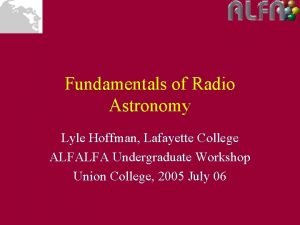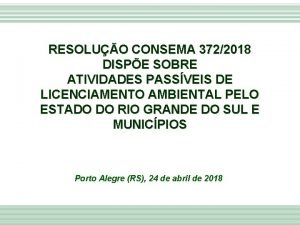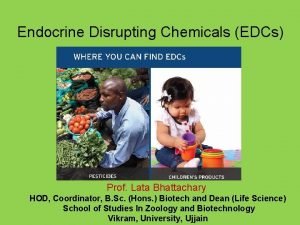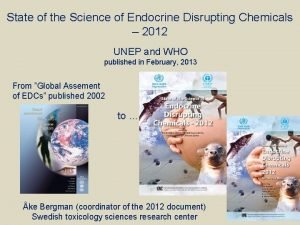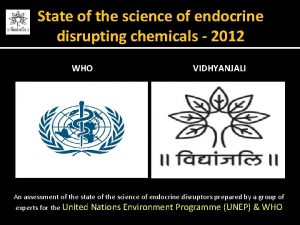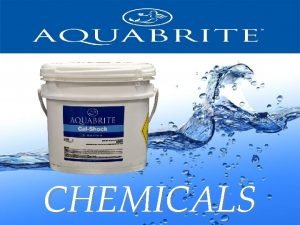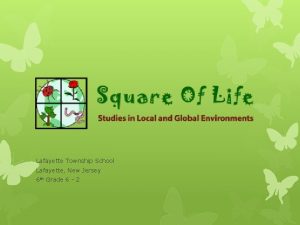Endocrine Disrupting Chemicals EDCs Lafayette College CE 372










- Slides: 10

Endocrine Disrupting Chemicals (EDCs) Lafayette College CE 372 Design II/Environmental Site Assessment Slides provided by Cynthia Gulledge, University of Louisville, Kentucky

Endocrinology: study of hormones General Features of the endocrine system: Transport Gland Hormone Target Cell rich blood supply secreted into the blood ductless can reach virtually every cell in the body hormone receptors are very specific

Endocrine Glands don’t forget the heart, placenta, fat All of these glands produce hormones and are also targets for hormones

ENDOCRINE SYSTEM HORMONES Chemical Messengers Secreted By Glands (pituitary, ovary, testis, adrenal) Into the Bloodstream

Chemical Confusion • Environmental chemicals can trick or confuse the body into thinking they are natural body chemicals

Symantec Confusion • • • Endocrine disrupting chemicals (EDCs) Hormonally-active agents Environmental estrogens Environmental hormones Environmental chemicals Environmental signaling

Functional or Receptor-Based Toxicology Mc. Lachlan, J. A. 2001 Environmental Signaling: What Embryos and Evolution Teach Us About Endocrine Disrupting Chemicals, Endocrine Reviews 22(3): 319 -341.

Sources of Hormonally-Active Compounds Agriculture Pesticide application Feedlot runoff (hormones, pharmaceuticals) Industry/Urbanization Plasticizers Industrial solvents, effluent Sewage effluent (hormones, pharmaceuticals) Personal care products (hair and skin care) Pesticide application (lawns, golf courses) “Natural” Phytoestrogens

Sexual Differentiation in Mammals Organizational Effect of Hormones If something goes wrong with testis formation, the rest of sexual differentiation is affected in the male

Take-Home Message Reproductive abnormalities in wildlife and humans Infertility / subfertility Feminization Advanced puberty Many hormonally-active compounds in environment Estrogens, anti-androgens, etc. Sources include agriculture, industry, plants These compounds cause reproductive abnormalities in lab e. g. , testicular dysgenesis, infertility, feminization This evidence forms the basis of the endocrine disrupter hypothesis
 Commodity vs specialty chemicals
Commodity vs specialty chemicals Cisco audit logs
Cisco audit logs Abb ability electrical distribution control system
Abb ability electrical distribution control system Abb ability electrical distribution control system
Abb ability electrical distribution control system Lafayette college radio
Lafayette college radio Chip nataro lafayette college
Chip nataro lafayette college Lafayette college investment club
Lafayette college investment club Consema 372
Consema 372 311 rounded to the nearest ten
311 rounded to the nearest ten Afm math
Afm math Clemson ece lab manual
Clemson ece lab manual




